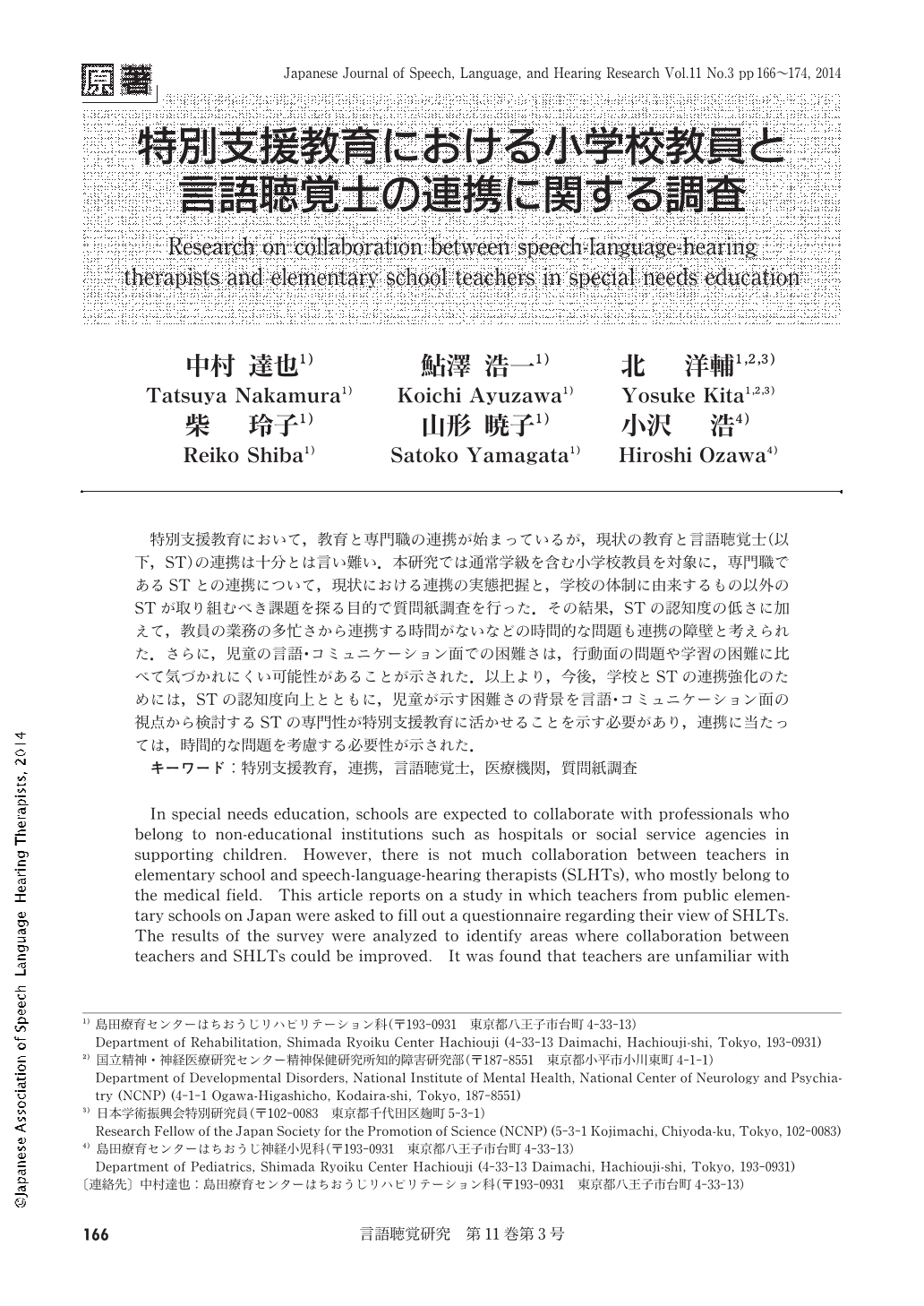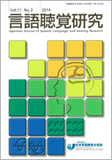Japanese
English
- 有料閲覧
- Abstract 文献概要
- 1ページ目 Look Inside
- 参考文献 Reference
- サイト内被引用 Cited by
特別支援教育において,教育と専門職の連携が始まっているが,現状の教育と言語聴覚士(以下,ST)の連携は十分とは言い難い.本研究では通常学級を含む小学校教員を対象に,専門職であるSTとの連携について,現状における連携の実態把握と,学校の体制に由来するもの以外のSTが取り組むべき課題を探る目的で質問紙調査を行った.その結果,STの認知度の低さに加えて,教員の業務の多忙さから連携する時間がないなどの時間的な問題も連携の障壁と考えられた.さらに,児童の言語・コミュニケーション面での困難さは,行動面の問題や学習の困難に比べて気づかれにくい可能性があることが示された.以上より,今後,学校とSTの連携強化のためには,STの認知度向上とともに,児童が示す困難さの背景を言語・コミュニケーション面の視点から検討するSTの専門性が特別支援教育に活かせることを示す必要があり,連携に当たっては,時間的な問題を考慮する必要性が示された.
In special needs education, schools are expected to collaborate with professionals who belong to non-educational institutions such as hospitals or social service agencies in supporting children. However, there is not much collaboration between teachers in elementary school and speech-language-hearing therapists (SLHTs), who mostly belong to the medical field. This article reports on a study in which teachers from public elementary schools on Japan were asked to fill out a questionnaire regarding their view of SHLTs. The results of the survey were analyzed to identify areas where collaboration between teachers and SHLTs could be improved. It was found that teachers are unfamiliar with the role of SLHTs and have little time for collaboration. Moreover, teachers are less aware of children's language and communication difficulties than of behavioral problems or learning difficulties. These results suggest that while keeping in mind teachers' busy schedule, SLHTs' professional strength in helping children's difficulties in language and communication should be made better known to teachers to promote collaboration in special needs education.

Copyright © 2014, Japanese Association of Speech-Language-Hearing Therapists. All rights reserved.


